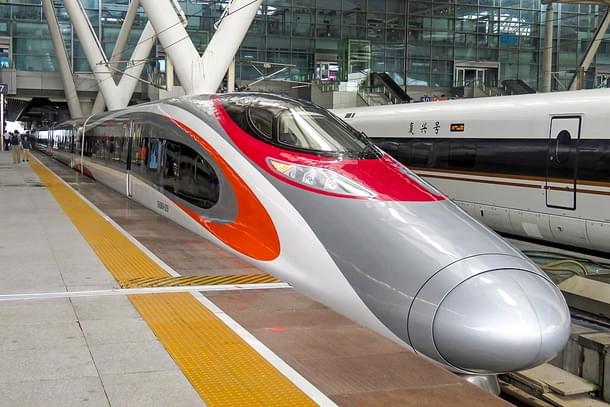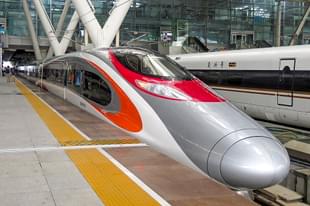Insta
World Bank Lauds China’s Stunning High-Speed Rail Success Story, Says It Is A Benchmark For Other Countries
Swarajya Staff
Jul 12, 2019, 12:37 PM | Updated 12:37 PM IST
Save & read from anywhere!
Bookmark stories for easy access on any device or the Swarajya app.


China's high-speed railway (HSR) has registered rapid growth and offered many viable practices for other countries considering HSR investment, according to a World Bank report released earlier this week.
Since 2008, China has put into operation an astounding 29,000 km of dedicated high-speed railway (HSR) lines, far more than the total high-speed lines operating in the rest of the world. The Chinese network now encompasses 66 per cent of the world’s total HSR lines - twice the total of all other countries.
Most major metropolitan regions in China are now either connected or in the process of being connected to HSR lines with a maximum speed of 200 kmph (kilometres per hour) or above.
At present in China the HSR lines are either designed for 350 kmph or 250 kmph. By the end of 2017, the length of 300–350 kmph lines was about 10,000 km, and the length of 200–250 kmph lines was about 15,000 km.
Key factors enabling the growth include the development of a comprehensive long-term plan and the standardisation of designs and procedures, said the World Bank report, which summaries various facets of China's HSR development.
China's Medium- and Long-Term Railway Plan, which looks up to 15 years in the future, provides a clear framework for the development of the system, according to the World Bank.
“China has built the largest high-speed rail network in the world. The impacts go well beyond the railway sector and include changed patterns of urban development, increases in tourism, and promotion of regional economic growth. Large numbers of people are now able to travel more easily and reliably than ever before, and the network has laid the groundwork for future reductions in greenhouse gas emissions,” Martin Raiser, World Bank Country Director for China said.
In China, high-speed rail service tends to be competitive with road and air transport for distances up to 1,200 km. Fares are competitive with bus and airfares and are about one-fourth the base fares in other countries. This has allowed high-speed rail to attract more than 1.7 billion passengers a year from all income groups.
The World Bank report pointed out that construction of the Chinese HSR network cost just two-third of other countries with an average investment between $17 million and $21 million.
The World Bank report also says that countries that are aspiring to build HSR network can draw several lessons and replicate practices including:
• A well-analysed Long-Term Plan, supported by government, with minimal changes once approved
• Standardisation of designs
• Competitive supply industry
• Partnering with local government
• Project management structure with clear responsibilities and decision-making authority, managers who stay for the duration of the project, and significant incentive compensation for managers
• Safety system that identifies and manages risk during all project phases
• Service with high punctuality, frequency, and speed. Value of good connectivity with conventional rail and urban transport
• High-volume, medium-distance markets
• Pricing that is affordable and competitive with other modes, and finds the “sweet spot” that maximises revenue while not substantially discouraging ridership
• Offering a range of services (high speed and conventional) at different price points to meet different passenger needs





